Last week, the Nigerian Association of Petroleum Explorationists (NAPE) commended the Nigerian National Petroleum Corporation (NNPC) and its Group Managing Director, Malam Mele Kyari, for executing oil exploration in the Benue Trough and Chad Basin despite the Coronavirus pandemic.
The President of NAPE, Mr. Alex Tarka, who relayed the association’s view in his remark during a virtual workshop for oil and gas journalists, said the exploration being carried out by the NNPC was attracting the attention of the International Oil Companies (IOCs), who the corporation is considering partnership with.
He specifically noted that the NNPC was pressing ahead with the oil drilling in the Benue Trough in order to add more to the lives of Nigerians, stressing that that the government need not wait for investors before embarking on oil exploration in the land.
He added that the government’s doggedness and the enabling environment would cause the IOCs to join in the search for oil.
Tarka commended Kyari, for leading the corporation on more oil search despite the challenges in the global oil environment, adding that the gesture shows that the current NNPC was desirous of matching the nation along its 40billion barrels crude oil reserves target.
Reserves’ Depletion/Risks
For many years, Nigeria, the largest oil producer in Africa, has not been able to add to the reserve, resulting in steady depletion with attendant economic risks for the country.
In one of its interventions, NAPE had, in October last year, raised the alarm that the continuous depletion of the nation’s oil reserve portended great danger for the country. It specifically warned that the reduction in hydrocarbon exploration and steady depletion of the oil reserves would drive Nigeria into risks of long-term disruption to oil and gas supplies, power generation, collapse of industries and significant loss of revenue.
It also declared that with Nigeria being a mono-economy that is largely dependent on the proceeds of crude oil for its sustenance, such inactivity in the exploration business would have dire consequences for the country.
Also, the Department of Petroleum Resources (DPR), the regulator of all oil and gas activities in the country had, in February this year, warned that the nation’s crude oil reserves of 37 billion barrels, two per cent of which being produced annually, would be depleted in 49 years.
The reserves, which stood at 37.45 billion barrels in 2014, fell to 37.06 billion barrels in 2015 and 36.74 billion barrels in 2016. It, however, rose to 36.97 billion barrels in 2017 and 37 billion barrels in 2018, a DPR data had shown.
“The nation’s depletion rate and life index are 2.04 per cent and 49.03 years respectively,” adding that the reserves depletion rate is a measure of 2018 total oil and condensate production divided by the reserves as of January 1, 2019.
“This indicator gives a bird’s eye on an annual basis, what percentage proportion of the quoted reserves was produced.
“The life index, on the other hand, is a measure of the reserves as of January 1, 2019, divided by the total production in 2018. This parameter highlights how long (in years) quoted reserves volumes will be available for production,” the regulator said.
The DPR said to achieve the government’s aspiration of four million barrels per day production and reserves of 40 billion barrels, “there is a need for corresponding increase in reserves as production increases,” noting that if that was not done, “the life index will fall from a sustainable long-term threshold to a less futuristic and sustainable medium to short-term range.”
The nation’s oil and gas production structure is majorly split between Joint Ventures onshore and in shallow water with foreign and local companies, and the Production Sharing Contracts in deep-water offshore, to which most of the international oil companies have shifted their focus in recent years.
The JV operators, despite having the highest production (about 41.64 per cent) among all the contract types, recorded a low depletion rate of about 1.8 per cent and high life index of 56.34 years, according to the DPR.
It said the PSC companies had the highest depletion rate of 3.10 per cent and the lowest life index of 32.15 years, while accounting for about 36.08 per cent of the nation’s total production.
“Perhaps, the companies may have taken advantage of the poor government take in the deep offshore terrain to deplete the reserves therein with little regard for long-term sustainable production as amplified by the life index,” the regulator said in a report.
It said the sole risk companies had the lowest depletion rate of 1.5 per cent and the highest life index of 65.49 years.
The regulator said these companies accounted for about 20.14 per cent of the nation’s total production in 2018, adding, “This depletion rate does not reflect the fact these companies hold the second largest reserves of about 26.90 per cent.”
The marginal field operators produced about 2.14 per cent of the nation’s total production in 2018, with a depletion rate of about 2.7 per cent, life index of 36.83 years and a national reserves portfolio of 1.61 per cent.
The DPR said about nine operating companies, which it described as unhealthy, “have oil and condensate life index of less than 15 years.”
“The statistics paint a very gloomy picture for these companies and urgent steps will be taken to address this observed trend. The department is engaging the companies to review their strategic plan to guarantee future reserves growth in order for them to remain in business,” it said.
According to the regulator, as of January 1, 2019, the reserves replacement ratio, which measures the addition to reserves relative to the total production, for Nigeria’s oil and condensate reserves stood at four per cent.
It said “Though this shows a positive RRR, it is not an impressive performance as just four per cent of the 2018 annual production was replaced via net addition to reserves.”
However, the DPR announced in June this year that as at January 1, 2020, Nigeria’s crude oil reserves dropped to 36.89 billion barrels, representing a decline of 82million barrels and 0.22 per cent of what was recorded in 2019.
Successful Exploration
Having understood the urgency of the situation and the need to rise to the occasion, NNPC under Kyari moved into aggressive exploration activity to ensure that more oil finds are made. Appointed last year by President Muhammadu Buhari as the new GMD of the corporation, Kyari made it clear to his team and the nation that the charge of ramping up the nation’s crude reserves to 40billion barrels and 3million barrels daily production by 2025 was achievable.
Between 2019 and 2020, the corporation has recorded successes in its bid to find new oil deposits and add to the nation’s reserves. In October, 2019, the NNPC announced that it had discovered oil in the North-eastern part of the country after several years of oil search in that area.
Announcing the positive development in a statement at the time, NNPC said it discovered hydrocarbon deposits in the Kolmani River II Well on the Upper Benue Trough/Gongola Basin, explaining that “preliminary reports indicated that the hydrocarbon discovery consisted of gas, condensate and light sweet oil of American Petroleum Institute (API) gravity, “ranging from 38 to 41 found in stacked siliciclastic cretaceous reservoirs of Yolde, Bima Sandstone and Pre-Bima formations.”
It had explained that NNPC acquired 435.54 kilometres-square (km2) of 3D seismic data over Kolmani prospect in the upper Benue trough in the Gongola basin to evaluate Shell Nigeria Exploration and Production Company (SNEPCo) Kolmani River 1 Well discovery of 33 billion standard feet (BCF) of gas and explore deeper levels.
The corporation also said it had also acquired additional 1183km2 of 3D seismic data over highly prospective areas of the Gongola basin with a view to evaluating the full hydrocarbon potential of the basin.
“NNPC has deployed world class cutting-edge technologies including surface geochemistry, ground gravity/magnetic, stress field detection, full tensor gradiometry aerial surveys to de-risk exploration in the frontier basins.
“The NNPC plans to drill additional wells for full evaluation of the hydrocarbon volume in the Gongola basin,” the corporation stated.
Buhari, had during the spud-in ceremony of Kolmani River II, stated the commitment of the federal government to the exploration for oil and gas in the frontier basins in the entire length and breadth of the country.
NNPC said the basins included the Benue trough, Chad basin, Sokoto and Bida basins, adding that the president stated that attention would also be given to the Dahomey and Anambra basins, which have already witnessed oil and gas discoveries.
The corporation said the discovery of oil and gas in commercial quantity in the Gongola basin would attract foreign investment, generate employment for people to earn income and increase government revenues.
However, giving Nigerians a clearer picture of the result of the exploration activity by the NNPC, the Minister of State for Petroleum Resources, Chief Timipre Sylva, had revealed that Nigeria has discovered one billion barrels of crude reserves in the North-east, pointing out that a lot of oil was yet to be found in Nigeria if there were more exploration activities.
“From the evaluation report we are getting, the reserves that have been discovered in the North-east is about a billion barrels. And they (explorationists at the field) are beginning to understand the geological structure of that area,” Sylva had disclosed.
The minister had added that though the country was not yet a mature territory for oil, it was still very prolific.
Sylva said: “If there is a lot of exploration, we believe that a lot of oil still remains to be found in Nigeria. And that is the beauty about Nigeria. Nigeria is not yet a mature territory; it is still very prolific.
“There has been no targeted exploration for gas and yet we have 200 TCF reserves.
So, we believe that if we really go out looking for gas, we can find a lot more that will put us in the league of the most prolific in the world.”
With the pace of exploration activity being championed by the NNPC, it will not be long when the aspired 40 billion barrels crude reserve and the three million daily production mark will be reached.
This Day
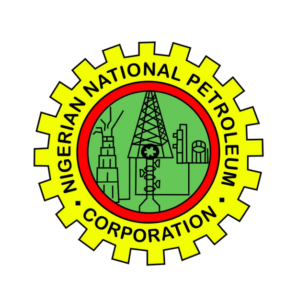
NNPC


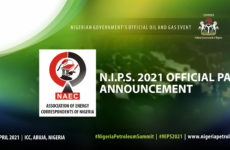

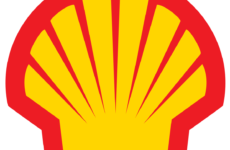








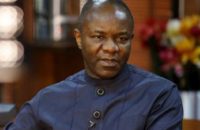
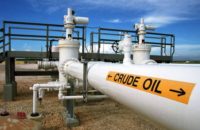
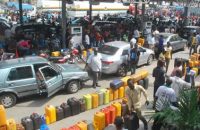

Comments